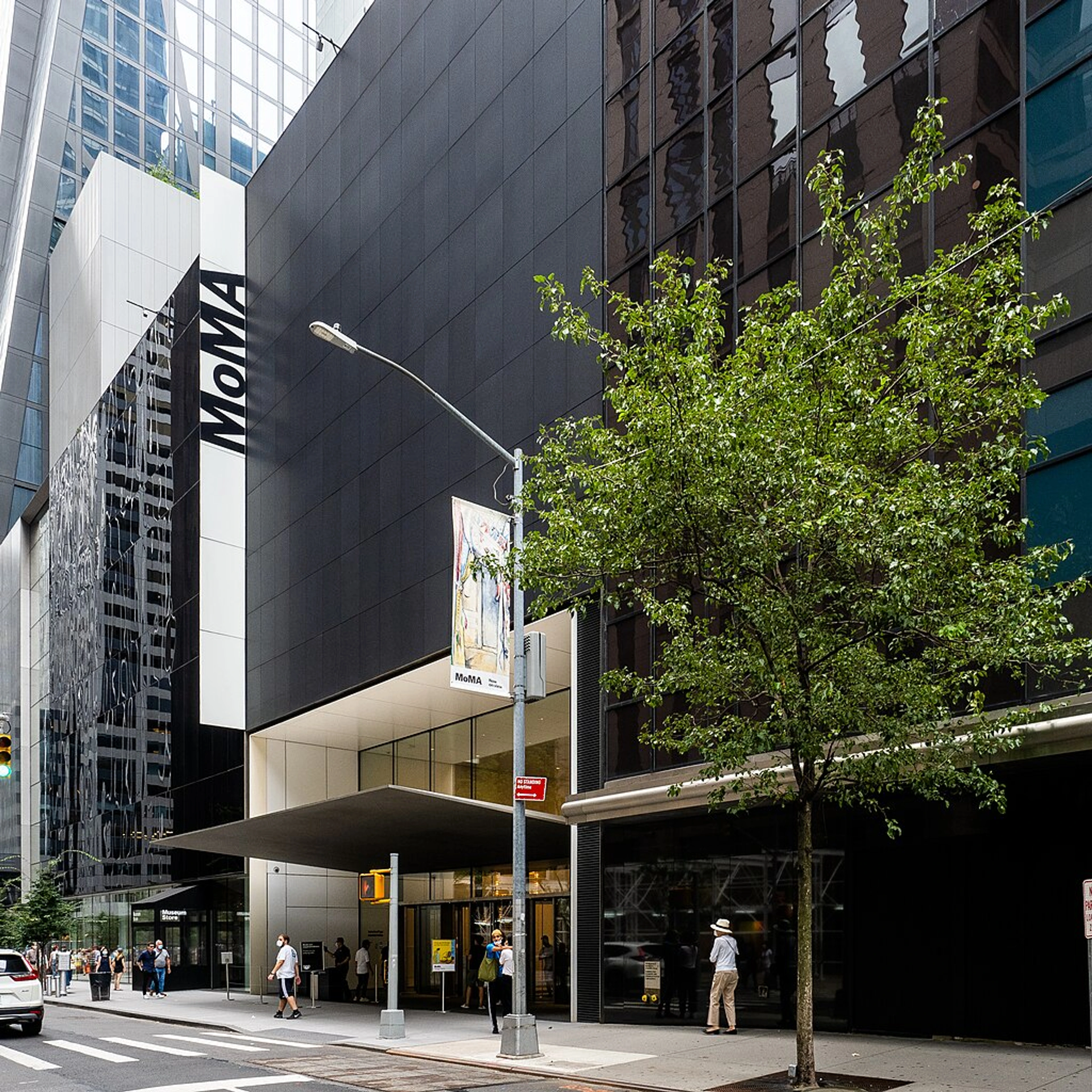
Contemporary Art Guide: Influential Artists, Trends & How to Explore
Step into the vibrant world of contemporary art with me. This expanded personal guide explores its historical roots, key characteristics, influential artists (with specific artwork examples!), current trends, the role of identity, how to experience galleries and fairs, and tips for collecting art you truly love. Plus, FAQs on controversy, technology, and how to talk about art.
Stepping into the vibrant, complex world of contemporary art can feel a bit like walking into a room where everyone seems to speak a language you're only just starting to learn. I remember my first few encounters – a mix of awe, confusion, and sometimes, if I'm honest, a quiet chuckle. I recall standing in front of a piece that was literally just a pile of bricks, thinking, "Okay, what am I missing here?" It's a feeling many of us share, isn't it? Unlike the familiar landscapes or portraits of historical art, contemporary art is the art of now, a mirror reflecting the immediate issues, wild technologies, and incredibly diverse perspectives of our time. And trying to definitively name the "best" contemporary artists? Well, that feels a bit like trying to herd cats – subjective, chaotic, and ultimately, probably not the point. For a look at artists currently making waves, you might find our guide to Top Living Artists You Should Know a good starting point, but remember, it's just one valuable resource among many, reflecting a particular moment and perspective in a sea of many.
Instead, think of this guide as my personal invitation to explore this exciting landscape with me. We'll look at what makes contemporary art tick, delve into some of the shifts that have shaped it, and I'll introduce you to a selection of influential figures whose work has really made me stop, think, and feel something. This isn't an exhaustive list (that would be impossible!), but rather a curated starting point for your own journey into the art being made today. And yes, as an artist myself, particularly drawn to color and abstraction, I'll share how this world connects back to my own practice and the art you can find here.
What Defines "Contemporary Art"? A Personal Take on Key Characteristics and Shifts
So, what exactly is contemporary art? While the exact start date is debated (often considered post-1970s, following the peak of Modern Art), I think of it as art that's grappling with the world as we know it, right now. It's the art that feels like it's breathing the same air as us, wrestling with the same questions, even if it sometimes does so in ways that make us scratch our heads. For a deeper dive into the timeline, you might enjoy When Did Contemporary Art Start? The (Gloriously Fuzzy) Artist's Guide.
To understand contemporary art, it helps to look back just a little. The transition from Modernism wasn't a clean break; it was more like a gradual shift in focus. Modernism, roughly from the 1860s to the 1970s, was often preoccupied with form, material, and the autonomy of the artwork itself – think of the pure abstraction of Mark Rothko or the formal experiments of Picasso. But by the 1960s, artists started pushing against these boundaries. Minimalism, for instance, stripped art down to its essential forms, often blurring the line between sculpture and object, challenging traditional notions of craftsmanship and composition. And then came the conceptual turn – the idea that the idea behind the art could be more important than the finished object. This was a seismic shift, and it really opened the floodgates for the incredible diversity we see today. It's like Modernism built the incredible, complex engine, and contemporary art decided to see what wild places it could take us, often leaving the engine exposed for everyone to see.
Contemporary art is characterized by a few key things that, for me, make it endlessly fascinating and sometimes wonderfully bewildering:
- Diversity of Media: Contemporary artists work across an unprecedented range of materials and forms, far beyond traditional painting and sculpture. I'm constantly amazed by the materials artists are using today – who knew elephant dung could be a medium? (Looking at you, Chris Ofili!) We see everything from installation art (creating an environment or experience within a space, like Olafur Eliasson's immersive light works), video, and performance art (live actions or events, often ephemeral, like Marina Abramović's endurance pieces) to digital art, photography, conceptual art (where the idea is paramount – a shift that really changed how I thought about art, and honestly, sometimes still makes my brain do a little flip), and even social practice (art involving community engagement and real-world impact, like Theaster Gates' work). It's a world where anything can be art, and everything is fair game. For a broader look at the definition, see 'What is Art?'.
- Ephemeral Art: Related to the diversity of media, much contemporary art exists only for a limited time. Think of a performance piece that happens once, or an installation built for a specific exhibition and then dismantled. This transient nature is a deliberate choice for many artists, challenging notions of permanence and value tied to physical objects. It's art that lives in memory and documentation, which is a fascinating concept in itself. I remember seeing an incredible, intricate sand sculpture on a beach once, knowing it would be gone with the tide. That feeling of temporary beauty, that's ephemeral art for me. Or consider Tino Sehgal's "constructed situations" – the art is the interaction, existing only in the moment it's experienced.
- Global Perspective: While Western art centers remain important (Best Art Cities: US, Europe), contemporary art is inherently global. Artists from Asia (Best Art Cities: Asia), Africa, Latin America, and the Middle East are increasingly central figures, bringing perspectives that challenge and enrich the conversation. It's a truly interconnected world, and the art reflects that, offering glimpses into experiences far removed from our own. This global shift is, for me, one of the most exciting aspects of contemporary art.
- Conceptual Focus: For many contemporary artists, the idea, concept, or message behind the artwork is paramount. The execution might be secondary to the thought process or the statement being made. This focus on the 'why' over just the 'how' or 'what' can be challenging, but also incredibly rewarding once you start digging into the artist's thinking. I remember when I first encountered purely conceptual work; it felt like a puzzle I didn't have the pieces for, but learning to appreciate the thought process behind it opened up a whole new way of seeing. Barbara Kruger's text-based works, for example, are powerful because of the ideas they convey, often using simple, direct language.

- Engagement with Society: Contemporary art frequently tackles pressing social, political, environmental, technological, and cultural issues of our time. It often serves as commentary, critique, or reflection. It's art that isn't afraid to look at the messy, complicated reality we live in, sometimes holding up a mirror we might not always want to look into. Ai Weiwei's work, for instance, is deeply intertwined with his activism and critique of political power.
- Blurring Boundaries: Artists often challenge traditional distinctions – between high art and popular culture (think of KAWS or Jeff Koons), between different artistic disciplines, between the artist and the audience (as seen in Relational Aesthetics). This can make things feel a bit chaotic, but it also opens up incredible possibilities for creativity and connection. It's like the art world decided the old rulebook was just a suggestion.
- Identity and Representation: A fundamental shift in contemporary art has been the increasing visibility and centrality of artists from diverse backgrounds – exploring themes of race, gender, sexuality, cultural heritage, and personal history. This isn't just a trend; it's a core characteristic that has reshaped the art world, challenging dominant historical narratives and bringing vital new perspectives to the forefront. Artists like Kerry James Marshall and Mickalene Thomas are powerful examples of this, consciously inserting Black subjects and experiences into the art historical conversation. Contemporary African Diaspora Art: A Personal Journey & Guide offers a glimpse into this rich area.
Beyond these core characteristics, the post-1970s era hasn't been static. It's seen various shifts and mini-movements emerge, often reacting to or building upon what came before. This is where things get really interesting, like watching different currents in a fast-flowing river.
Key Post-1970s Movements and Ideas
While contemporary art is too diverse to be neatly categorized, certain movements and ideas have been particularly influential since the 1970s:
- Postmodernism: This broad, often debated term describes a reaction against the perceived certainties and grand narratives of Modernism. Postmodern art often embraces irony, pastiche, and a questioning of originality and authorship. It's like art started winking at us, acknowledging its own constructed nature.
- Neo-Expressionism: Emerging in the late 70s and early 80s, particularly in Germany and Italy, this movement saw a return to painting and figuration with raw, emotional force and often large-scale canvases. Artists like Anselm Kiefer and A. R. Penck brought intense subjectivity and historical engagement back to the forefront.
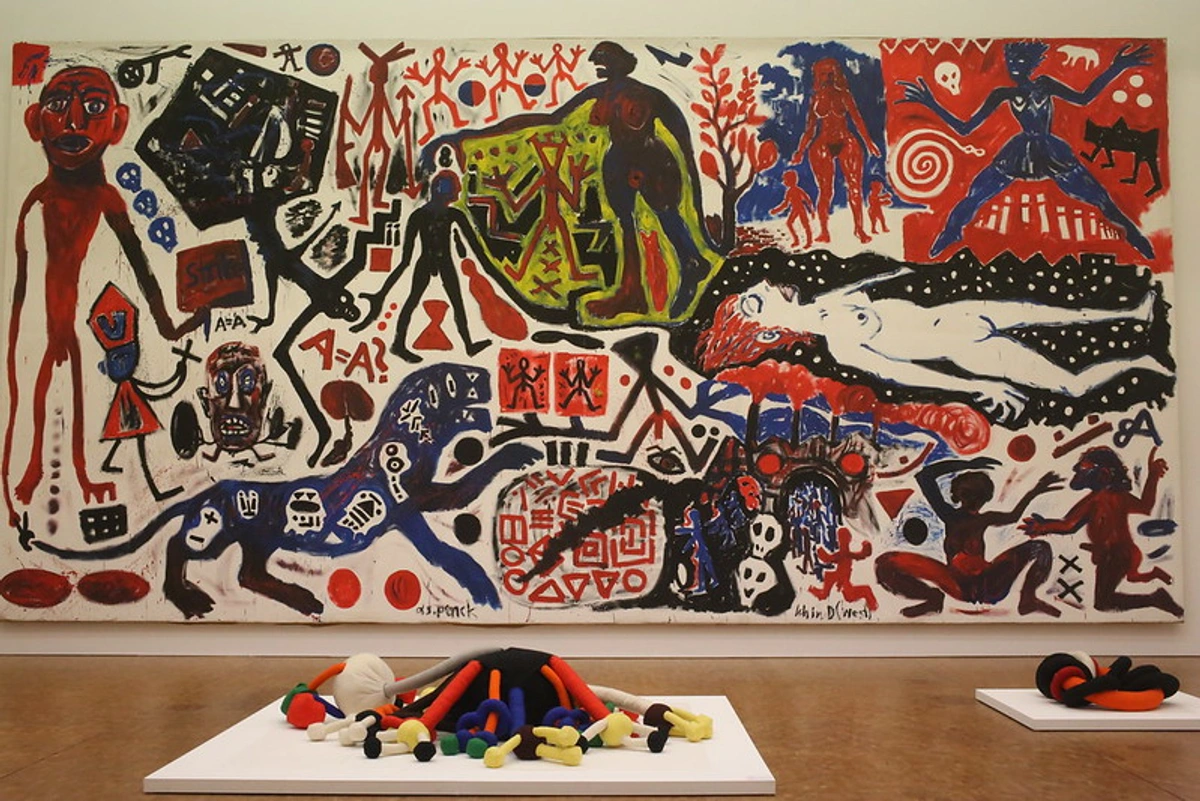
- Appropriation Art: Artists like Richard Prince (Ultimate Guide to Richard Prince) and Sherrie Levine recontextualized existing images (from advertising, photography, or art history) to critique media, authorship, and consumer culture. It raises fascinating questions about what it means to 'make' art.
- Institutional Critique: Artists like Hans Haacke and Andrea Fraser turned their critical gaze onto the art world itself – its museums, galleries, market, and power structures. It's art that asks, "Who decides what art is, and why?" – a question I often find myself pondering!
- Relational Aesthetics: Championed by curator Nicolas Bourriaud in the 1990s, this theory focuses on art that creates social environments and human interactions, emphasizing relationships over objects. Rirkrit Tiravanija's practice of cooking for gallery visitors is a prime example.
These aren't always neat boxes, and many artists defy easy classification, but understanding these currents helps illuminate the diverse approaches and ideas at play in contemporary art.
Current Trends Shaping the Contemporary Art World
Alongside these defining characteristics and historical shifts, certain overarching trends are particularly prominent right now. It's fascinating to see what artists are collectively grappling with, what feels urgent and relevant. What issues do you see reflected in the art around you?
I see a strong and growing focus on themes of identity politics, with artists exploring race, gender, sexuality, and cultural heritage with increasing nuance and visibility. (Contemporary African Diaspora Art: A Personal Journey & Guide). Environmental themes are also becoming more urgent and prevalent, as artists grapple with the climate crisis and our relationship with the natural world. It feels like artists are really stepping up to confront the big, scary issues of our time.
And, of course, the impact of digital technology continues to evolve dramatically. It's not just influencing the media artists use (video, AI, virtual reality) but also how art is experienced, shared, and even valued. Social media platforms have become crucial spaces for artists to gain visibility, bypassing traditional gatekeepers – a double-edged sword, perhaps? And then there's the whole wild world of NFTs (Non-Fungible Tokens), which exploded onto the scene, challenging traditional notions of ownership and value for digital art. It's a chaotic, exciting, and sometimes baffling space, showing just how quickly the art world can adapt (or try to!) to new tech. Hito Steyerl's video essays are essential viewing for anyone trying to make sense of art in the digital age.
It's also worth mentioning that alongside conceptual and new media art, expressive painting – particularly work embracing bold color and abstraction – remains a powerful and popular force. Artists like Mark Rothko (though modern, his influence on color is huge), Frank Stella, and many contemporary painters continue to explore the emotional resonance and decorative potential of color and non-representational forms, creating works that invigorate spaces and speak directly to the senses. If you're drawn to the power of color and form, like I am, you might find something that speaks to you in the contemporary prints and paintings featured here.
Criteria for Identifying Influential: The Forces Shaping Visibility
Given the subjectivity and the ever-shifting landscape, how do we even begin to talk about artists who are generally considered significant or "leading" today? It's not just about personal taste; there are often-mysterious forces at play that shape an artist's visibility and impact. It's a complex ecosystem, and navigating it feels a bit like trying to understand the weather – sometimes predictable, often surprising. Here are some factors that seem to matter, though I often find myself pondering which ones I personally find most compelling (or perhaps frustrating – the art world can be a bit opaque sometimes, can't it?):
- Critical Acclaim & Museum Recognition: Being included in major museum collections (Best Museums Worldwide, Best Museums for Modern Art), having significant solo exhibitions or retrospectives, and getting positive attention from respected art critics (Art Critics Today: Do They Still Matter?) definitely puts an artist on the map. This feels like a validation of artistic merit, which I appreciate.
- Art Market Significance: Strong representation by influential international galleries (Best Galleries Worldwide, Best Galleries in the US), and significant value placed on their work in both the primary and secondary art markets (auctions). Ah, the market... a necessary beast, I suppose, but let's not pretend it's the only measure of soul or influence. While it's a reality of the art world, I personally find this criterion the least compelling when thinking about artistic impact beyond financial value. Learn more about Understanding Art Prices.
- Innovation & Influence: Breaking new ground conceptually or technically, pioneering new uses of media, and demonstrably influencing the work of other artists. This, for me, is where the real excitement lies – seeing artists push boundaries and inspire others.
- Participation in Major Exhibitions: Regular inclusion in globally important events like the Venice Biennale, Documenta in Kassel, Whitney Biennial, and major international art fairs. These platforms offer incredible exposure and signal an artist's relevance on a global stage.
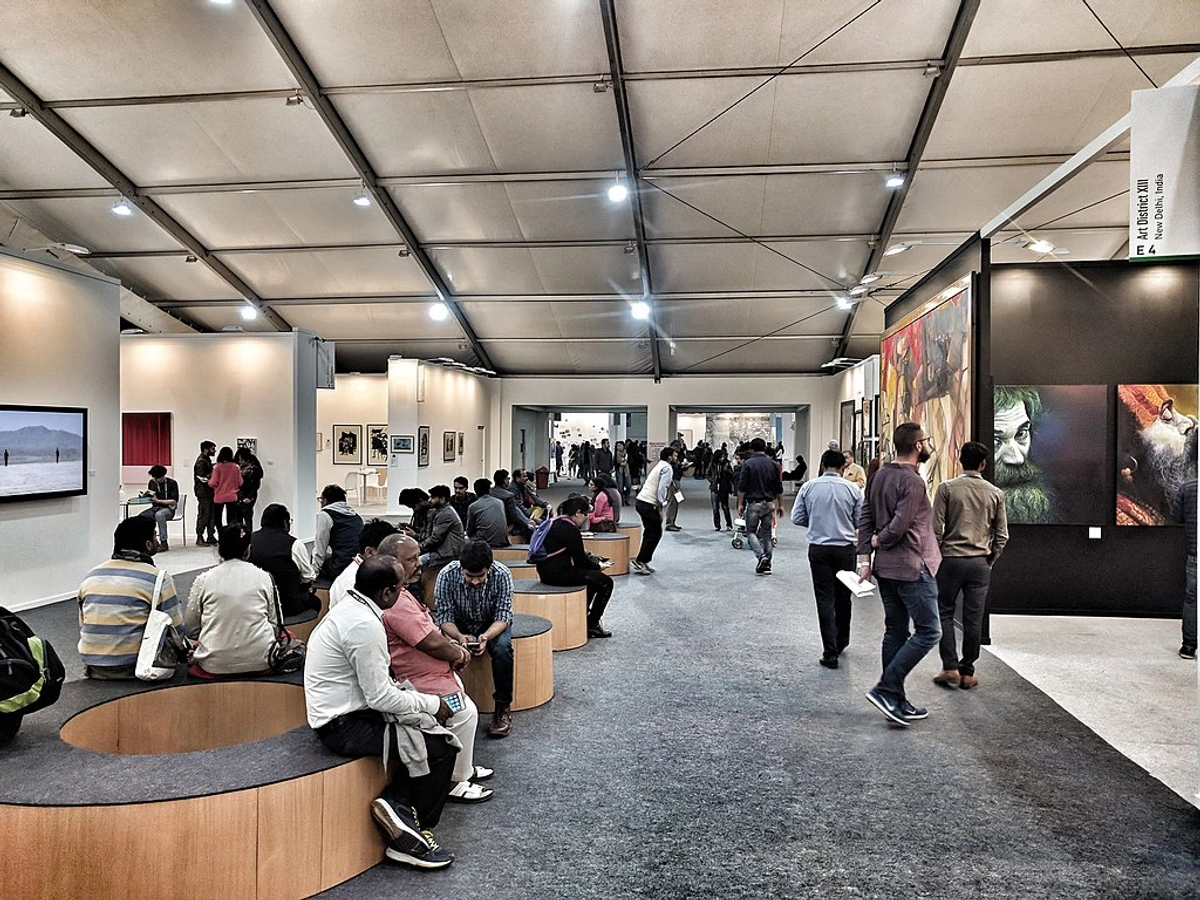
- Cultural Resonance: Creating work that captures the public imagination, sparks debate, or becomes iconic within broader culture. This is perhaps the most elusive factor, but when it happens, it shows art's power to connect with people beyond the art world bubble.
- The Role of Gatekeepers: It's also worth noting the significant influence of powerful curators (Art Curator Role: Ultimate Guide), major institutions (beyond just museums, think large foundations or non-profits), and influential art publications. Their choices about who to show, write about, and collect can dramatically shape an artist's career trajectory and public perception. And let's not forget the role of art education and academia; art schools are crucibles for new ideas and talent, and academic discourse often shapes how art is understood and discussed, influencing future generations of artists, critics, and curators.
Exploring the Landscape: My Starting Point with Key Figures
Okay, deep breath. Here's where we dive in, but please know this is just my starting point, a few folks who've really made me stop and think, whose work I keep coming back to. This list is highly selective and intended only to illustrate the incredible diversity of influential contemporary art out there. Countless other significant artists are working today, and discovering them is part of the fun! My selection here is heavily influenced by my personal interests and the artists whose work has genuinely resonated with me, whether through their conceptual depth, emotional impact, or sheer visual power. Consider this a friendly nudge down a few interesting paths.
Let's look at some widely recognized artists, grouped loosely by their primary practice, with a little note on why they resonate with me:
Painting Mavericks:
- Gerhard Richter (b. 1932, German): A towering figure whose work constantly interrogates the nature of painting, moving between photorealistic works, gestural abstraction, and conceptual pieces. I'm fascinated by how he questions what painting can be, often within a single career. Seeing his abstract 'scrape' paintings in person is a completely different experience than seeing them online.
- Yayoi Kusama (b. 1929, Japanese): Globally beloved for her immersive "Infinity Mirror Rooms" and iconic polka-dot motifs, exploring themes of obsession, obliteration, and the cosmos. Her "Infinity Rooms" feel like stepping into another dimension – pure, joyful, slightly unsettling obsession. I remember the first time I walked into one, maybe 'Phalli's Field' or 'Infinity Mirrored Room – The Souls of Millions of Light Years Away'; it was pure magic.
- Kerry James Marshall (b. 1955, American): Creates powerful, large-scale figurative paintings centered on Black subjects, consciously inserting them into the Western art historical canon from which they were largely excluded. His paintings hit you with their beauty and then make you think deeply about history and representation. They demand to be seen.
- Cecily Brown (b. 1969, British): Known for her energetic, fragmented paintings that hover between abstraction and figuration, often referencing art history and depicting sensual, tumultuous scenes. I love the sheer energy and movement in her work; it feels like the paint itself is alive.
- Anselm Kiefer (b. 1945, German): Creates large-scale, often heavily textured paintings and installations grappling with German history, mythology, memory, and cultural identity, frequently incorporating materials like straw, ash, and lead. His work feels monumental and deeply layered, literally and figuratively, wrestling with heavy themes. (Ultimate Guide to Anselm Kiefer)
- Peter Doig (b. 1959, Scottish/Canadian): Known for his dreamlike, enigmatic landscapes and figurative scenes, often drawn from personal memories, photographs, or film stills, rendered with rich color and distinctive textures. The way he uses color and builds texture creates these haunting, atmospheric worlds I could get lost in. (Ultimate Guide to Peter Doig)
- Elizabeth Peyton (b. 1965, American): Famous for her intimate portraits of friends, historical figures, and celebrities, often small in scale and characterized by their fluid brushwork and emotional intensity. Her portraits feel incredibly personal and alive, capturing something essential about her subjects with just a few brushstrokes.
- Julie Mehretu (b. 1970, Ethiopian/American): Creates complex, large-scale abstract paintings and drawings layering architectural renderings, maps, and gestural marks to explore themes of globalization, migration, and conflict. Her massive canvases are like visual symphonies of lines and layers, capturing the complexity of our interconnected world.
- Chris Ofili (b. 1968, British): Known for his vibrant, multi-layered paintings incorporating materials like elephant dung, glitter, and map pins, often exploring themes of Black identity, culture, and spirituality with intricate patterns. He's the artist who first made me think about materials in a totally new way – challenging, beautiful, and layered with meaning.
- Adrian Ghenie (b. 1977, Romanian): Creates textured, often unsettling figurative paintings that blend historical references (particularly 20th-century European history) with personal memory and abstract passages, frequently distorting faces and forms. His paintings have this raw, visceral quality; the way he handles paint feels both destructive and incredibly expressive. (Ultimate Guide to Adrian Ghenie)
- George Condo (b. 1957, American): Known for his "Artificial Realism," creating grotesque yet psychologically compelling portraits that fuse influences from Old Masters, Cubism, and cartoons. His portraits are weirdly captivating, like distorted reflections of the human psyche.
- Mickalene Thomas (b. 1971, American): Creates bold, rhinestone-encrusted paintings, installations, and photographs celebrating Black female identity, beauty, and power, often referencing art history and Blaxploitation imagery. Her work is unapologetically glamorous and powerful, celebrating Black women with incredible style and sparkle.
- Dana Schutz (b. 1976, American): Known for her vibrant, often chaotic narrative paintings depicting fictional, sometimes grotesque scenarios with expressive brushwork and a distinctive sense of humor and absurdity. Her use of color and energetic brushwork is fantastic, even when the subject matter is a bit wild.
Sculptural Innovators:
- Jeff Koons (b. 1955, American): Famous (and controversial) for his highly polished sculptures based on kitsch objects and popular culture, exploring themes of consumerism, taste, and celebrity. You can't ignore Koons, love him or hate him. His work, like the giant 'Balloon Dog' sculptures, forces you to think about taste and value – and maybe makes you smile a little.
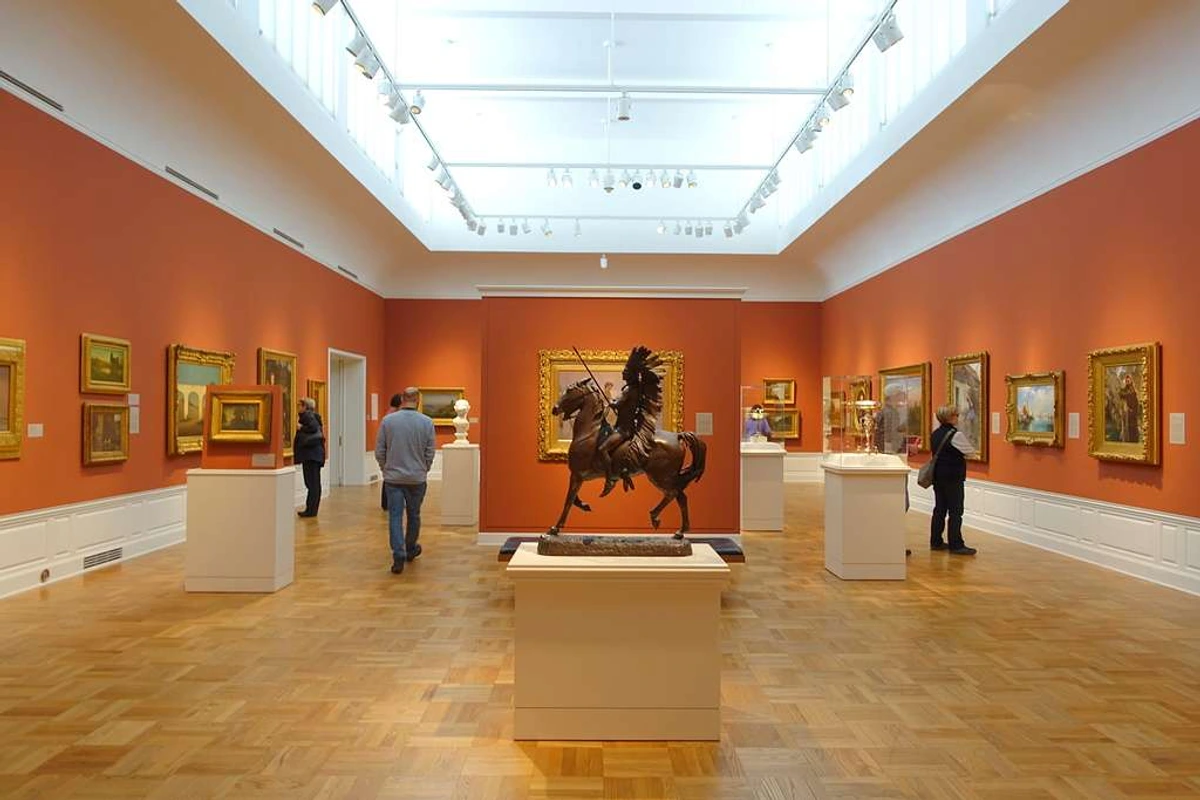
- Anish Kapoor (b. 1954, British-Indian): Creates large-scale, often monochromatic sculptures using materials like pigment, wax, steel, and resin, playing with perception, void, and reflection (e.g., "Cloud Gate" in Chicago). His sculptures often feel magical, playing tricks on your eyes and making you question space and form. 'Cloud Gate' is a perfect example – simple, massive, and utterly captivating.
- Kara Walker (b. 1969, American): Uses cut-paper silhouettes, often in large installations, to create brutal and complex narratives about race, gender, sexuality, and violence in American history. Her work is visually stunning but carries a powerful, often uncomfortable historical weight.
- Rachel Whiteread (b. 1963, British): Known for casting the negative space around everyday objects and architectural features (from hot water bottles to entire houses), creating minimalist sculptures that evoke memory and absence. I find her work incredibly poetic, making the invisible visible and giving form to memory. Her 'House' piece, a cast of the interior of an entire terraced house, was a powerful, haunting example.
- Urs Fischer (b. 1973, Swiss): Creates playful yet often monumental sculptures and installations that frequently involve decay, transformation, or unexpected juxtapositions of materials, challenging traditional notions of sculpture. His work is often surprising and a bit mischievous, playing with materials and expectations in delightful ways.
- Thomas Schütte (b. 1954, German): Works across various media, including sculpture, prints, and installations, often known for his distorted figurative sculptures and architectural models that explore the human condition and societal structures. His figures are often awkward and vulnerable, capturing something raw about being human.
- Phyllida Barlow (1944-2023, British): Created large-scale, anti-monumental sculptures from inexpensive, everyday materials like cardboard, timber, cement, and fabric, often appearing precarious and raw. I admired her ability to create something so monumental and impactful from humble, everyday stuff.
- Doris Salcedo (b. 1958, Colombian): Creates poignant sculptures and installations often using domestic objects and subtle interventions in architectural spaces to address trauma, grief, and political violence, particularly in Colombia. Her work is deeply moving and speaks volumes through quiet, powerful gestures.
- El Anatsui (b. 1944, Ghanaian/Nigerian): Famous for his monumental, tapestry-like sculptures woven from thousands of discarded aluminum bottle caps and copper wire, exploring themes of consumption, waste, history, and cultural exchange. His bottle cap tapestries are breathtakingly beautiful and carry such a powerful message about history and transformation.
- KAWS (Brian Donnelly, b. 1974, American): Known for his distinctive figurative characters (like "Companion") with X-ed out eyes, presented as large-scale sculptures, toys, and paintings, blurring the lines between fine art, street art, and commercial design. KAWS is everywhere, a great example of how contemporary art crosses into pop culture.
Conceptual & Installation Giants:
- Ai Weiwei (b. 1957, Chinese): A multidisciplinary artist and activist whose work (sculpture, installation, photography, film, social media) often critiques political power, censorship, and human rights issues in China and globally. Ai Weiwei is a force – his art is inseparable from his activism, making powerful statements on a global scale, whether it's filling the Tate Modern Turbine Hall with millions of porcelain sunflower seeds or documenting the aftermath of the Sichuan earthquake. (Ultimate Guide to Ai Weiwei)
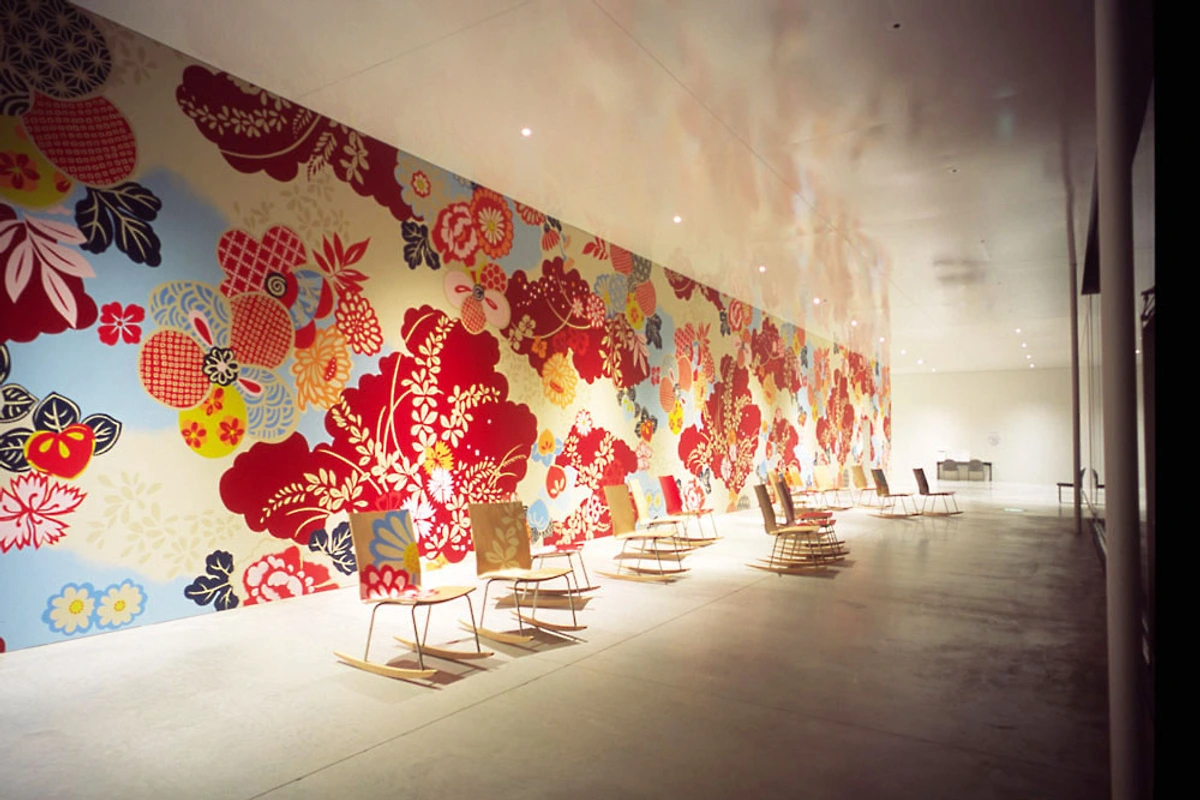
- Olafur Eliasson (b. 1967, Danish-Icelandic): Creates immersive installations often employing natural elements like light, water, fog, and temperature to explore human perception, experience, and our relationship with the environment. His installations are often pure sensory experiences, reminding you to pay attention to the world around you. 'The Weather Project' at the Tate Modern, with its giant sun and misty atmosphere, was unforgettable.
- Barbara Kruger (b. 1945, American): Known for her distinctive graphic style combining black-and-white photographs with bold, declarative text (often in Futura Bold Oblique font), critiquing consumerism, power, and identity. Her work is instantly recognizable and cuts right to the chase with sharp, witty critiques like "I Shop Therefore I Am".
- Damien Hirst (b. 1965, British): A central figure of the Young British Artists (YBAs) (a loose group that emerged in the late 80s/early 90s, known for their sensational and often controversial approach), known for sensational works exploring themes of life, death, science, and belief, including animals preserved in formaldehyde and "spot paintings." Hirst is the showman of the art world; his work is designed to provoke and challenge, often with a dark humor. The formaldehyde shark, 'The Physical Impossibility of Death in the Mind of Someone Living', is probably his most infamous piece. (Ultimate Guide to Damien Hirst)
- Tracey Emin (b. 1963, British): Another prominent YBA, known for her highly personal and confessional works across various media (installation, neon, drawing, painting, sculpture), often exploring themes of love, sex, loss, and vulnerability (e.g., "My Bed"). Her honesty and vulnerability in her work are disarming and powerful. 'My Bed', literally her unmade, messy bed surrounded by personal detritus, is a raw and unforgettable self-portrait.
- Danh Vo (b. 1975, Vietnamese/Danish): Creates conceptually driven installations often incorporating found objects, documents, and fragmented forms (like his replica of the Statue of Liberty) to explore themes of history, identity, migration, and cultural ownership. His work often feels like piecing together fragments of history and identity.
- Tino Sehgal (b. 1976, British/German): Creates "constructed situations" rather than material objects – live encounters between viewers and trained interpreters enacting specific choreographies or conversations, challenging the nature of the artwork and its commodification. Sehgal's work is ephemeral and challenging, making you question what art can even be. You can't buy a physical object, only the instructions for the 'situation'.
- Pierre Huyghe (b. 1962, French): Creates complex, evolving systems and ecosystems as artworks, often involving living organisms, artificial intelligence, film, and environmental elements, exploring the boundaries between human, animal, and technology. His work feels like stepping into a strange, living experiment.
- Santiago Sierra (b. 1966, Spanish): Known for his controversial actions and installations that often involve hiring marginalized individuals to perform physically demanding or ethically questionable tasks, critiquing labor structures, capitalism, and inequality. Sierra's work is often difficult and confrontational, forcing you to look at uncomfortable truths about society.
- Rirkrit Tiravanija (b. 1961, Thai/Argentinian): A key figure in Relational Aesthetics (an art theory focusing on human relationships and social contexts created by the artwork), often creating situations rather than objects, such as cooking and serving food for gallery visitors, transforming the exhibition space into a site for social interaction. I love the idea of art as a social experience, breaking down barriers between people.
Lens-Based & Digital Pioneers:
- Cindy Sherman (b. 1954, American): Uses staged self-portrait photography to explore female identity, stereotypes, and the construction of self, appearing in countless different guises throughout her career. Her ability to transform herself and critique identity through photography is incredible. Her 'Untitled Film Stills' series is a classic example.
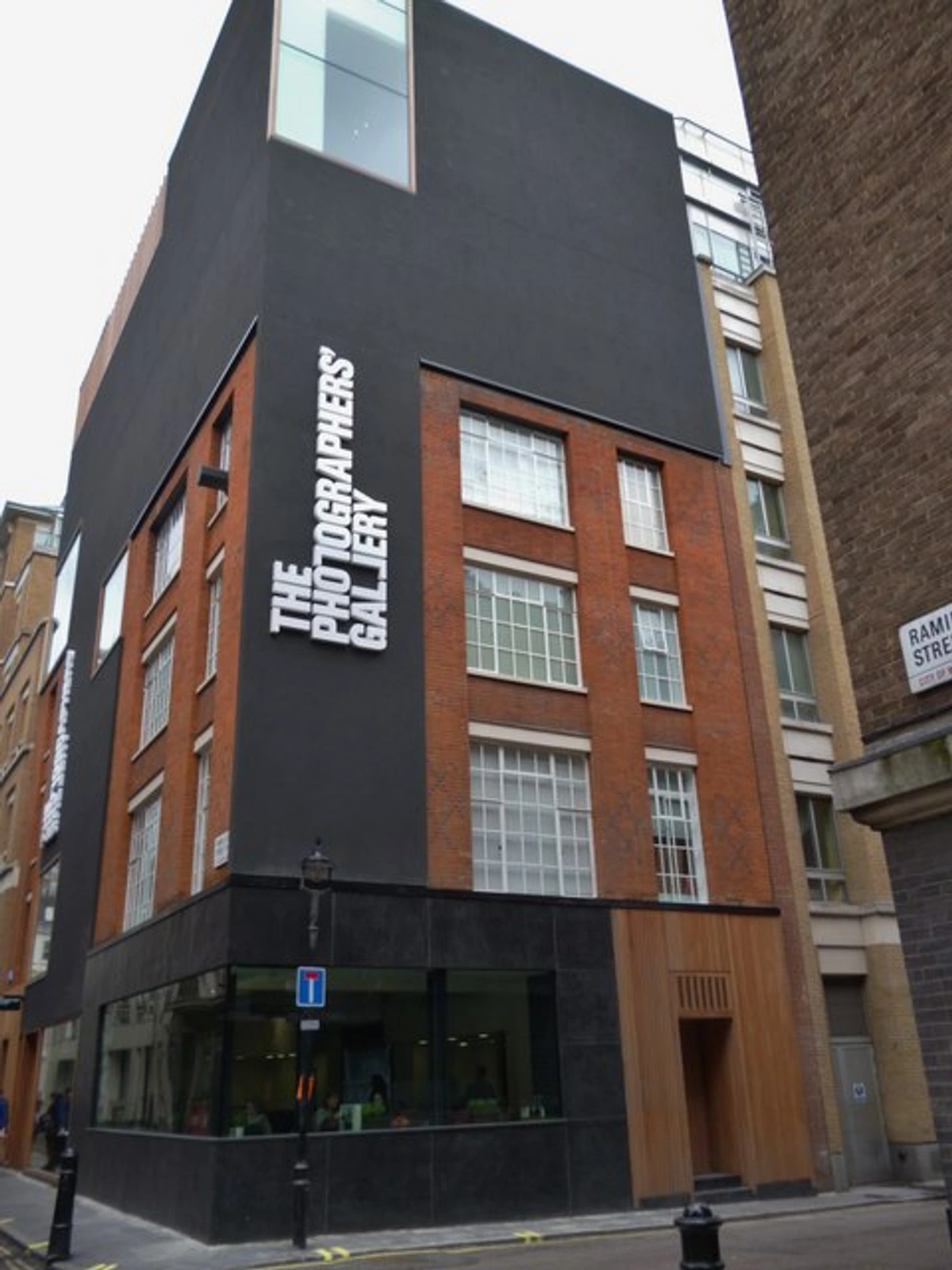
- Andreas Gursky (b. 1955, German): Creates large-format, often digitally enhanced photographs depicting scenes of globalization, consumerism, and collective experience with a detached, panoramic perspective. His photographs are often massive and overwhelming, capturing the scale of modern life, like his famous image of the Rhine River.
- Hito Steyerl (b. 1966, German): A highly influential video artist, filmmaker, and writer whose work critically examines digital culture, surveillance capitalism, artificial intelligence, and the politics of image production and circulation. Her video essays are sharp, insightful, and essential viewing for understanding our digital world.
- Wolfgang Tillmans (b. 1968, German): Works fluidly across genres, from intimate portraits and still lifes to abstract photographic works and large-scale installations, capturing contemporary life and exploring the nature of photography itself. I admire his versatility and how he finds beauty and meaning in everyday moments.
- Nan Goldin (b. 1953, American): Known for her raw, intimate, and diary-like photographic documentation of her own life and the lives of her friends, particularly within LGBTQ+ communities and subcultures, often presented as slideshows. Her work is incredibly brave and personal, offering an unflinching look at life and community in her seminal work, 'The Ballad of Sexual Dependency'.
- Shirin Neshat (b. 1957, Iranian/American): Creates powerful photographs and video installations exploring themes of gender, identity, exile, and politics in relation to Islamic culture, often using calligraphy overlaid on portraits. Her images are visually striking and layered with cultural and political meaning.
- Jeff Wall (b. 1946, Canadian): Known for his large-scale, meticulously staged photographic tableaux presented in lightboxes, often referencing art history and cinematography to explore moments of everyday life, social tension, or allegory. His lightboxes are like cinematic scenes, carefully constructed to tell a story.
- Cao Fei (b. 1978, Chinese): A multimedia artist working with video, digital media, photography, and installation, exploring the experiences of young Chinese people navigating rapid urbanization, virtual worlds (like Second Life), and technological change. Her work captures the strange, hybrid reality of life in a rapidly changing digital world.
- Trevor Paglen (b. 1974, American): Uses photography, installation, and investigative journalism techniques to explore invisible infrastructures of surveillance, data collection, and military operations, making the hidden visible. He makes the unseen forces that shape our lives visible through his art.
- Ryan Trecartin (b. 1981, American): Creates frenetic, highly stylized videos featuring bizarre characters, rapid-fire dialogue, and fragmented narratives, reflecting and critiquing internet culture, identity performance, and consumerism. His videos are a wild, chaotic ride that perfectly captures the overload of online culture.
Performance & Social Practice:
- Marina Abramović (b. 1946, Serbian): A pioneering figure in performance art, known for intense, durational pieces exploring the limits of the body, endurance, pain, and the relationship between performer and audience. Abramović is legendary; her performances are physically and emotionally demanding, for her and the viewer. 'The Artist is Present', where she sat silently across a table from museum visitors, is a powerful example of her work. (Ultimate Guide to Marina Abramović)
- Theaster Gates (b. 1973, American): His practice spans sculpture, installation, performance, and "urban interventions," often involving the revitalization of neglected spaces and communities on Chicago's South Side, blending art with social activism. I admire how Gates uses art as a tool for social change and community building.
- Tania Bruguera (b. 1968, Cuban): Creates politically charged performance art and long-term projects ("Arte Útil" or useful art) that often engage directly with social issues, power structures, censorship, and migration, sometimes putting herself at personal risk. Her work is incredibly brave and directly confronts political issues.
- Francis Alÿs (b. 1959, Belgian/Mexican): Known for his often subtle, poetic, and politically resonant "walks" and actions documented through video, painting, and drawing, exploring themes of borders, labor, conflict, and urban life (e.g., "When Faith Moves Mountains," where he organized 500 volunteers to move a sand dune one shovel-full at a time). His simple actions often carry profound political and poetic weight.
- William Kentridge (b. 1955, South African): A highly acclaimed multidisciplinary artist known for his charcoal drawings, animated films (often made through erasure), tapestries, sculptures, and opera productions, frequently addressing themes of apartheid, memory, and political change in South Africa. His animations are mesmerizing, bringing drawings to life to explore complex histories.
Street Art & Urban Interventions:
- Banksy (Active since 1990s, British): An anonymous yet globally famous graffiti artist, political activist, and filmmaker, known for satirical stencils and installations commenting on politics, culture, and ethics, appearing unexpectedly in public spaces. Banksy is the ultimate art world trickster, constantly challenging the system from the outside with witty and provocative interventions.
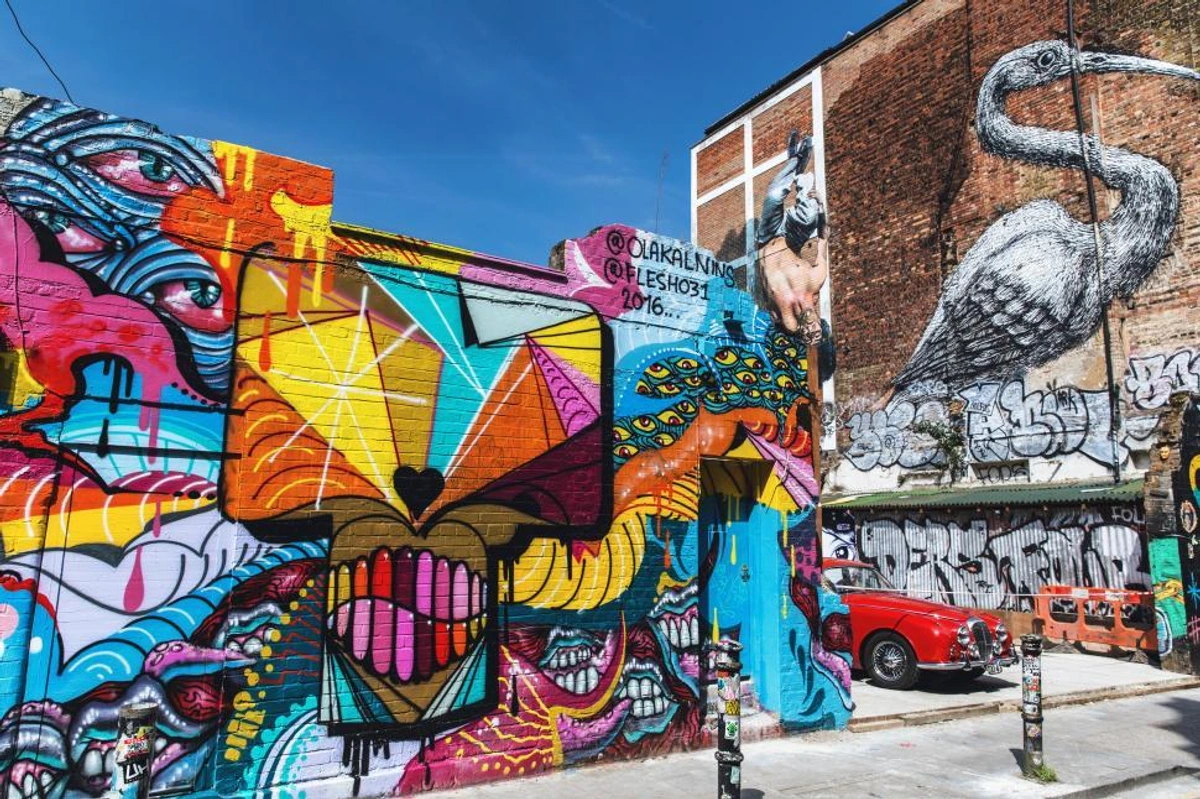
- JR (b. 1983, French): A photographer and street artist known for his massive black-and-white photographic portraits pasted onto buildings and public structures worldwide, often focusing on marginalized communities and challenging perceptions. His large-scale portraits transform public spaces and give visibility to often-unseen people.
- Shepard Fairey (b. 1970, American): A street artist, graphic designer, and activist, widely known for his "Obey Giant" sticker campaign and the Barack Obama "Hope" poster, whose work often blends graphic design, political commentary, and pop culture references. Fairey's work shows the power of graphic design and street art to make powerful political statements.
Fiber & Textile Art Innovators:
- Sheila Hicks (b. 1934, American): A pioneering figure in contemporary fiber art, creating vibrant sculptures, installations, and woven works that range from monumental architectural interventions to intimate "minimes," exploring color, texture, and form. Her use of fiber and color is incredibly innovative, pushing the boundaries of the medium.
- Faith Ringgold (b. 1930, American): Celebrated for her narrative "story quilts," paintings, sculptures, and children's books addressing African American history, identity, feminism, and civil rights with vibrant color and powerful storytelling. Her story quilts are beautiful, powerful, and tell important histories.
- Bisa Butler (b. 1973, American): Creates stunning, large-scale quilted portraits of African Americans, based on historical photographs, using vibrant, layered textiles and intricate stitching to convey dignity, identity, and cultural history. Her quilted portraits are absolutely breathtaking, bringing historical photos to life with incredible skill and vibrant color.
Beyond the Headlines: My Tips for Discovering More Contemporary Art
So, that list was just a glimpse, a few folks who stand out to me. But the contemporary art world is vast and full of hidden gems waiting to be found. Think of this section as me sharing a few insider tips from one art lover to another – how I keep discovering new things beyond the big names you see everywhere:
- Look for Emerging Artists: Spotting a truly fresh voice feels like finding a hidden gem! Galleries, art schools (MFA shows), and online platforms are crucial for discovering the next generation. Actively seeking out new talent is key to keeping your finger on the pulse. (See: How to Spot Emerging Artists, Identifying Emerging Artists Worth Collecting).
- Seek the Underrated: Many fantastic artists operate outside the mainstream market glare. Explore regional scenes and alternative spaces. Sometimes the most powerful work isn't the most expensive or famous. (See: Best Underrated Artists).
- Embrace Diversity: Make an effort to discover artists from different cultural backgrounds, genders, and geographic locations. The richness of contemporary art lies in its global multiplicity, and you'll miss so much if you only look in one place.
- Follow the Guides: Find curators, art writers, or online platforms whose taste and insights resonate with you. Following their work can be a fantastic way to discover artists you might not otherwise encounter. It's like having a personal guide through the maze!
How to Experience Contemporary Art: Getting Out There
Engaging with contemporary art is an active process, and getting out there to see it in person is key. My first art fair felt like a beautiful, overwhelming circus – in the best way! It can feel intimidating at first, but remember, everyone starts somewhere. Here's how I like to dive in:
- Visit Museums: Top modern and contemporary art museums (Best Museums for Modern Art) provide context and showcase significant works. They offer a great overview and often have fantastic temporary exhibitions. Don't feel like you have to see everything; pick a few artists or exhibitions that pique your interest.
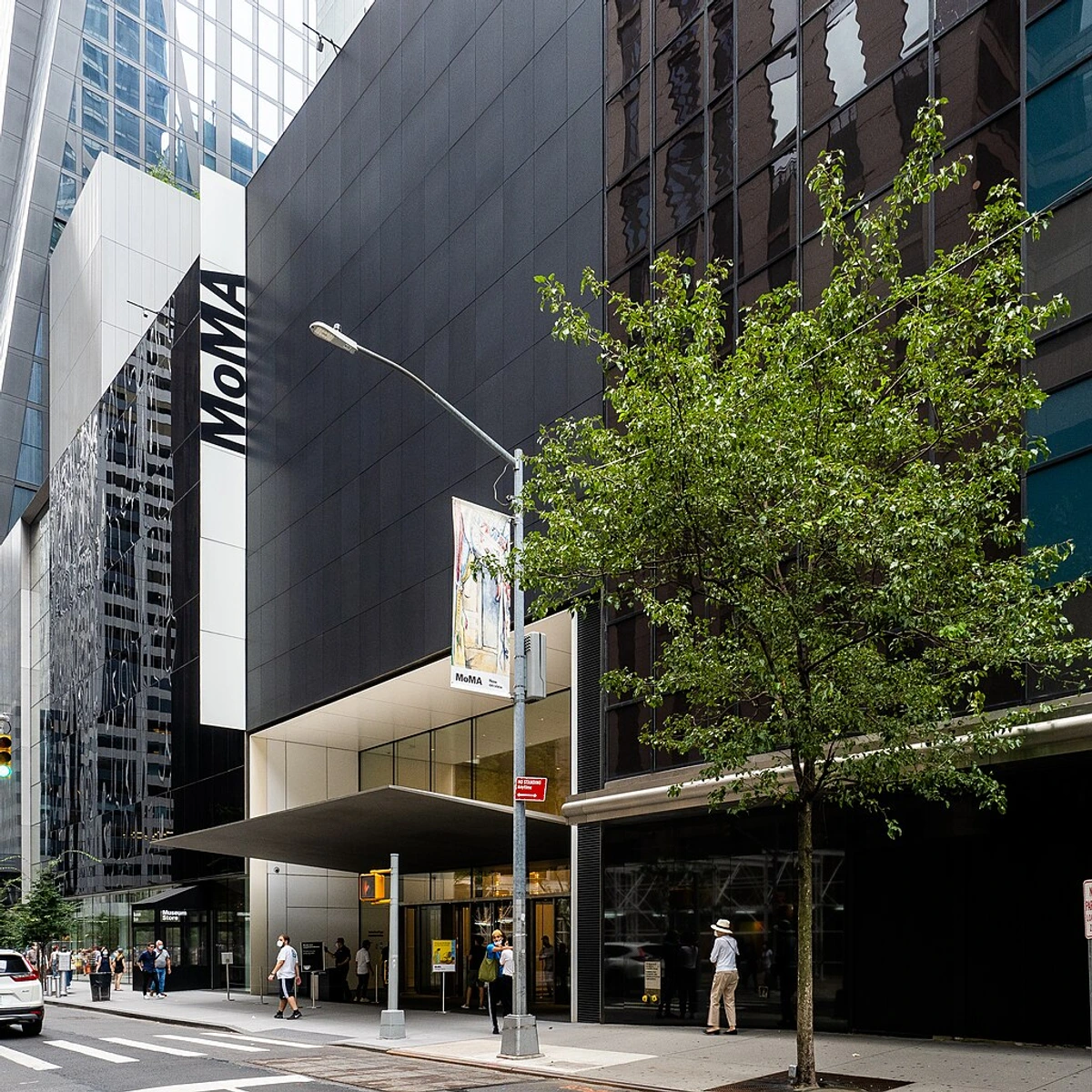
- Explore Galleries: Commercial galleries (Best Galleries) are on the front line, showing the very latest work. Don't be intimidated; they are usually free and open to the public. Walking into a quiet gallery and having a moment with a piece can be incredibly powerful. What is an Art Gallery?
- Attend Art Fairs & Biennales: These large-scale events (Visiting Art Fairs) offer a concentrated dose of the current art scene. They can be overwhelming, but seeing so much work from around the world in one place is an experience! (Art Fair Crowd)
- Seek Dedicated Spaces: Artist foundations, non-profits, and unique venues like my own museum in 's-Hertogenbosch can offer in-depth experiences focused on specific artists or types of work. These often provide a more intimate look.
- Go Online: While no substitute for seeing art in person, gallery websites, platforms like Artsy, and social media are valuable discovery tools. They're great for research and getting a first look. Where to Find Affordable Original Art Online
- How to Look: Don't feel pressured to 'get' everything or see every single piece. Sometimes, focusing deeply on just one or two artworks that catch your eye can be more rewarding than rushing through a whole exhibition. Allow yourself to have an emotional reaction – confusion, joy, discomfort – without needing an immediate intellectual explanation. It's okay to just look and feel first. What does the art make you feel? And don't hesitate to read the wall text or the artist's statement if they're available – they can often provide crucial context or a window into the artist's thinking, which can completely change your perception of a piece. It's like getting a little hint for that puzzle I mentioned earlier.
Collecting Contemporary Art: What I've Learned
Interested in owning contemporary art? It's a rewarding journey, and what I've learned is that the most important thing is to connect with the art on a personal level. For me, the most important thing is buying what you love. I remember the quiet thrill of acquiring my first piece of contemporary art – it was a small, abstract painting with vibrant blues and yellows that just spoke to me. It wasn't by a famous name, and it didn't cost a fortune, but the feeling of having that piece in my space, seeing it every day, was incredibly fulfilling. That personal connection is the real value. Here's a little of my philosophy:
- Start with research. Learn about artists and define your taste. What colors, styles, or themes resonate with you? (How to Buy Art for Beginners).
- Consider your budget. Prints (Prints vs. Paintings) and works by emerging artists (Starting an Art Collection on a Budget) can be more accessible entry points. Don't feel pressured to start with a masterpiece.
- Understand the primary market (buying from galleries) versus the secondary market (auctions). They operate very differently.
- Be aware that contemporary art can be a volatile investment; buy what you love first and foremost. The emotional return is often far greater than the financial one. (Researching Artists).
Conclusion: An Ongoing, Ever-Evolving Conversation
Contemporary art isn't a single style or a fixed list; it's a dynamic, multifaceted conversation reflecting the complexities of our globalized, hyper-connected world. The "best" contemporary artists are, in my opinion, those whose work resonates powerfully, challenges perceptions, pushes boundaries, and contributes meaningfully to this ongoing dialogue. The true joy, for me, lies in the exploration – in discovering artists whose vision speaks to me, expands my understanding, or simply provides profound visual or emotional inspiration. It's a journey without an end, constantly revealing new perspectives and connections. I hope this guide encourages you to dive in and explore the art of our time alongside me, finding your own connections and favorites along the way! Perhaps you'll even find a piece that speaks to you among the paintings and prints available here, adding your own voice to this vibrant world.
What contemporary artists have captured your attention recently?
Frequently Asked Questions (FAQ)
- What makes an artist "contemporary"? Generally, an artist is considered contemporary if they are living and working in the present era, or if their work emerged and gained significance from the latter half of the 20th century (often post-1970s) to the present day. It's about being part of the current artistic conversation.
- Who are some of the most famous contemporary artists today? This changes, but figures frequently in the spotlight include Yayoi Kusama, Gerhard Richter, Ai Weiwei, Jeff Koons, Cindy Sherman, Banksy, Kara Walker, Damien Hirst, Anselm Kiefer, and Anish Kapoor, among many others mentioned above. This is just a small fraction of the influential artists working today, and who is "most famous" can depend on where you are and who you ask! (Famous Living Artists Today)
- What's the difference between modern and contemporary art? Modern Art refers to a historical period of art (roughly the 1860s to the 1970s) characterized by specific movements like Impressionism, Cubism, Surrealism, and Abstract Expressionism. Contemporary art refers to the art of the present, starting around the 1970s and continuing today, characterized by its diversity, global nature, and conceptual focus. Think of modern art as the grandparent and contemporary art as the grandchild – related, but very different! (What is Modern Art?)
- Is contemporary art hard to understand? Some contemporary art, particularly conceptual or highly theoretical work, can be challenging initially. I've certainly had moments where I felt completely lost! Understanding the artist's intent, the context, and the ideas being explored often helps appreciation. Reading wall text, artist statements, or critical reviews can provide insight. Sometimes, specific art jargon needs clarification. But sometimes, it's okay to just look and see how it makes you feel. There's no single right way to experience it.
- How can I discover new contemporary artists? Visit local galleries, attend MFA (Master of Fine Arts) thesis shows at art schools, browse online platforms like Artsy or Instagram (following galleries and curators), read art magazines and blogs, and visit art fairs. It's all about being curious and looking around! (Discover Underrated Artists)
- Is contemporary art a good investment? It can be, but it's often highly speculative, especially with emerging artists. The contemporary art market can be volatile. It's generally advised to buy art because you love it, not purely as an investment. The joy of living with a piece you connect with is, in my opinion, the best return on investment. (See Art as an Investment: Risks vs. Rewards).
- How does your own art relate to contemporary art? As an artist working today, my practice is inherently part of the contemporary art landscape. I'm particularly drawn to exploring color and abstraction, which are vibrant areas within contemporary painting. My work is influenced by the diverse approaches and ideas I encounter, and I aim to contribute my own voice to this ongoing conversation, often through the paintings and prints you can find here or the exhibitions at my museum in 's-Hertogenbosch.
- How do I approach or interpret abstract contemporary art? Ah, abstract art! My personal favorite. Don't feel pressured to find a hidden picture or a single "meaning." Instead, try focusing on the visual elements: the colors, shapes, lines, textures, and composition. How do they make you feel? What emotions or sensations do they evoke? Read the title or artist statement if available, but trust your own reaction first. It's often more about the experience and the formal qualities than a literal interpretation. (Why is Abstract Art Compelling?)
- What role does technology or social media play in contemporary art today? A massive one! Technology is both a medium (digital art, video, AI-generated art) and a platform (social media for sharing and discovery). Social media can give artists direct access to a global audience, but it also changes how art is consumed – often quickly, on small screens. NFTs have introduced new ways to own and trade digital art, though that space is still evolving rapidly and has its controversies. Technology is constantly pushing the boundaries of what art can be and how we interact with it.
- Why is contemporary art often controversial? Contemporary art often tackles difficult or uncomfortable subjects, challenges societal norms, or uses unconventional materials and methods. This can provoke strong reactions, debate, and even outrage. Controversy isn't always the artist's goal, but it can be a byproduct of art that pushes boundaries and reflects the tensions of its time. It forces us to confront our own beliefs and reactions, which can be uncomfortable but also valuable.
- How can I talk about contemporary art without feeling like an expert? Great question! You don't need a degree to talk about art. Start with your personal reaction: "I feel...", "This makes me think of...", "I'm confused by...", "I love the way the artist used...". Ask questions! "What do you see?", "What do you think the artist is trying to say?", "Have you seen anything like this before?". Read the wall text and artist statement aloud. Focus on describing what you see and how it makes you feel. It's okay not to have all the answers; the conversation itself is part of the experience.




